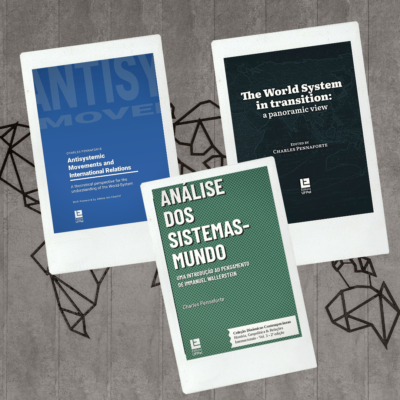In the liberal logic, states, focusing on “hub” or “network” strategies, would have every interest in managing their natural resources based on the laws of the market and the generalized fluidity of trade.
In the liberal logic, states, focusing on “hub” or “network” strategies, would have every interest in managing their natural resources based on the laws of the market and the generalized fluidity of trade. This rather ideological view seems to be discredited today. The 2008 crisis ended up undermining widespread trust in the self-regulation mechanisms of the markets. And among the determinants of power, the possession and exploitation of the riches of the subsoil and the seabed occupy an increasingly prominent place.
In a world that is about to reach 9 billion inhabitants by 2050, the logic of self-sufficiency or less dependence pushes nations more than ever to compete for the supply of raw materials. The competition for their control, which has never ceased to structure international relations, has intensified particularly evidently in recent years.
In the agricultural sector, the hunger riots that occurred in 2008, following the huge increase in the price of agricultural raw materials, accelerated the global movement to buy back arable land (“land grabbing”) by foreign investors. The United States, the United Arab Emirates, Saudi Arabia and China are among the main buyers. Their goals: Africa and Latin America, where 90% of the unexploited arable land is located. These appetites generate tension and distrust.
The issue of hydrocarbons is always at the center of the power games. After successfully exploiting its shale gas reserves, the United States is once again self-sufficient. Saudi Arabia, a major former supplier, now fears a loosening of the bond that united America and protected it from Iran. His feverish behavior in the Iraqi and Syrian crises is partly due to this new political-energy equation. Another example of significant development is the case of Greenland, where oil reserves are now estimated to be half that of Saudi Arabia. Combined with the 2008 referendum on extended autonomy (75% yes), this new perspective will accelerate the movement towards eventual independence. The maneuvers of the great powers are already multiplying around the island, which adds to its strategic position appetizing energy prospects.
One sector, among all, appears particularly emblematic of the future tensions around raw materials, namely that of mineral resources. Since the late 1990s, sustained global economic growth, driven by emerging countries since the 2008 financial crisis, has caused the price of raw materials, particularly extractive ones, to rise. The end of easily accessible resources has strong geopolitical implications: it triggers the race for new resources hitherto protected from the hostility of their ecological environments (poles, offshore hills, dense forests) or geopolitical environments.
Does the specter of Resource Nationalism reappear? Certainly. Today it goes beyond the well-documented cases of Russia, Bolivia or China. The information went unnoticed, but Madagascar, long a land of passive exploitation of the appetites of mining multinationals, announced in September 2014 the creation of a public mining company to exploit the country’s resources in full sovereignty.
Let’s take another example: Boeing and United Technologies Corporation have decided to stock up on titanium, an essential substance for aeronautics, as it represents 15 to 20% of the metals used in a modern aircraft. Who is the main titanium supplier in the world? The Russian group VSMPO. Do the two American companies, whose decision was revealed in August, fear possible retaliation in the context of the Ukrainian crisis? Recall that US law in theory prohibits companies working for the Department of Defense from purchasing their titanium overseas, but that the two groups, in this case, produce for both the civilian sector and their military customers. Titanium was also, symbolically, the material for the flag that Russia planted in 2007 at a depth of 4,200 meters to assert its sovereignty on the Arctic continental shelf … The gas is therefore far from summarizing the levers it intends to use. Vladimir Putin in the current match between Washington, Brussels, Kiev and Moscow.
Furthermore, Ukraine is not the only interesting geo-economic example in the new framework of the “war” on mineral resources, which seems to be taking an increasingly dramatic turn. Between China and Japan, the blackmail of the offer is regularly brandished in the context of territorial tensions between the two countries of the China Sea. In this area, the level of economic interdependence between the major nations (South Korea, Japan, People’s Republic of China, Taiwan) is certainly increasing and a sim The intertwining would tend, under a certain angle, to reduce the risks of regional explosion. Now, although economic actors seem mature enough to overcome the suspicious approaches that states maintain by pooling geo-economic issues, it alone does not seem sufficient to build regional stability.
The 2010 Sino-Japanese confrontation around the Senkaku Islands, which resumed in 2012 and 2013, therefore led Beijing to limit its rare earth exports to Japan. This group of 17 metals, whose production is dominated by China, is essential for the manufacture of high-tech products, one of the strengths of the Japanese economy. Tokyo suddenly found itself weakened. And it wasn’t long before he reacted. On March 13, 2012, Japan, supported by the United States and the European Union, filed a complaint with the World Trade Organization (WTO), denouncing the restrictions imposed by China on the export of its rare earths. Beijing was condemned in March 2014, without however bringing about any political changes.
Giuseppe Gagliano is President of the Centro Studi Strategici Carlo de Cristoforis (Italy) and specialist in Geopolitics.

